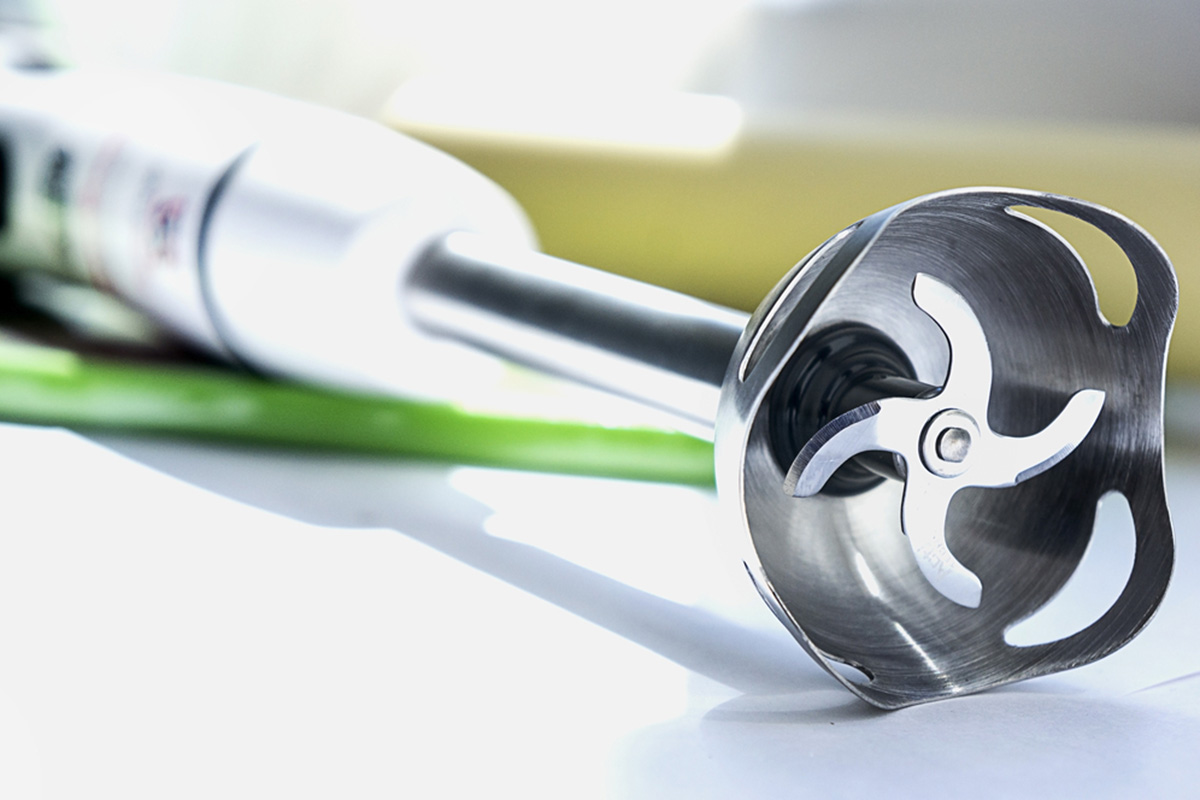The hand blender that you got to further your recent passion for cooking sure has proved worthy of every penny spent. But, sometimes you seriously wonder if the cleanup job is worth it. If you find it just as pesky to clean your hand blender as you did your entire food processor, then it’s time you learned some new kitchen tricks.
Hand blenders have taken kitchen appliances to a whole new level. You can easily puree fruits and vegetables and make soups, smoothies, shakes and so much more. You can even make chutneys and pesto. Preparing baby foods, whisking eggs, or whipping up a fresh batch of mayonnaise – the hand blender comes in handy in a variety of scenarios.
In many senses, the hand blender has become a portable food processor with a number of advantages. You don’t have to heave out the bulky food processor for small chores anymore. And you don’t have a huge cleanup job waiting for you, no matter how minimal the use.
But the endgame remains the same. It’s you vs. the dirty, greasy blender. Armed with scrub pads and brushes, you get to the dreaded task only to end up with food particles stuck in crevices that you can do nothing about.
If you’re unhappy with the less-than-sanitary condition of your hand blender, it’s time to switch to this efficient method to clean it in less than a minute. You can easily save your time as well as energy.
This method will help you clean your hand blender easily at home, thus enhancing your cooking experience.
Steps to clean Hand Blender
Things you’ll need:
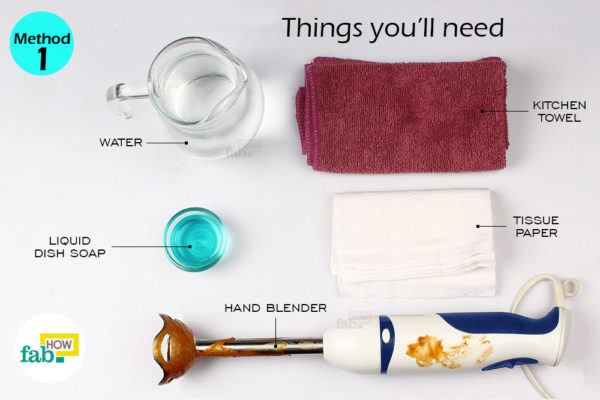
- Hand blender (to be cleaned)
- Liquid dish soap
- Water
- Tissue paper
- Kitchen towel
Step 1. Put water in the beaker
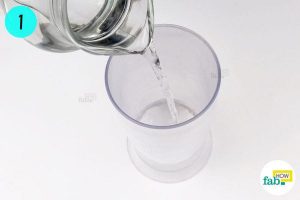
Pour 1 cup of water into the beaker accompanying your hand blender. You can also use a tall glass for this, so long as it is wide enough to easily accommodate your hand blender.
Step 2. Add liquid dish soap

Measure out ½ teaspoon of liquid dish soap and add it to the beaker. The soap will help break up oil and grease deposits, thus resulting in an effective cleanup job.
Step 3. Immerse the hand blender into the soapy mix and blend
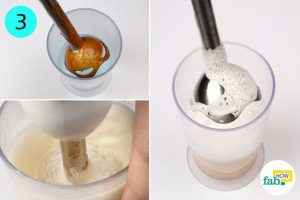
Immerse the hand blender all the way into the soapy mix. Blend on high if your hand blender has speed options. Owing to the rapidly rotating blade, the soapy water deftly cuts through the gunk, even in hard-to-reach places. Do this for about 30 seconds or more, depending on how dirty your hand blender is.
So where previously you used to attack the attachment with scrub pads, brushes and a variety of other tools with incomplete success, now the only thing you need to do is blend. Sit back and let the blender clean itself.
Step 4. Detach the wand from the motor shaft

Detach the wand of your hand blender from the motor shaft. This will give you better access to the wand for rinsing. Many models of hand blenders have an ejector button to detach the adaptors and attachments. See what works with your hand blender.
Step 5. Rinse with water and proceed to dry
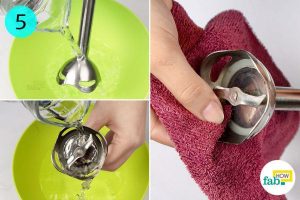
Rinse the adaptor with water to wash off the sudsy residue and clean your hand blender completely. Dry the adaptor with a kitchen towel or a dish towel.
Step 6. Clean the motor shaft with a damp tissue paper

Dampen the surface of a tissue paper. Clean the motor shaft with the damp tissue paper. This will remove any food spills from the motor shaft.
Additional Tips
- After each use, immerse your hand blender in a beaker filled with water and blend. This should take care of regular cleaning most of the time.
- Adjust the quantity of the cleaning solution according to the size of the beaker to avoid spills.
- Clean your hand blender near the kitchen sink or at a work station that you can easily clean in case of any spills.
- Dry the appliance completely before putting it to use to avoid any possibility of an electric shock.
- Take necessary precautions to avoid electric shocks while cleaning hand blenders with power cords.
- To deal with stubborn and dried-on food, you may use lukewarm water. Use only mildly hot water if you must. Refer to your electric blender guide to find out its heat resistance and act accordingly.
